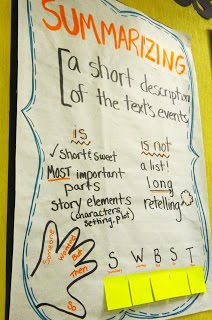Marzano’s 9 Effective Instructional Strategies
Similarities and Differences
Teach students to use comparing, classifying, metaphors, and analogies when they identify similarities and differences.
Compare
*identify key characteristics; used to identify similarities and differences
Classify
*use key characteristics to group things that are alike into categories
Graphic Organizers
Venn diagrams and Comparison Matrices
Compare and Contrast Mini-Poster
Skitch
App for Students to Use to Practice
Classification Tables and Bubble Maps
Metaphors
*the two items in a metaphor are connected by an abstract relationship
Analogies
*help us see how seemingly unrelated things are similar; increases our understanding of new information
General Resources
iPad Apps by Instructional Strategies
More Technology Resources by Strategy
Printables
Templates for analogies, metaphors, etc.
Video Clip-Marzano-Teaching is Complex
Strategies are tools! There isn't a magic bullet.
Summarizing and Note Taking
Students should learn to determine important information and discard unnecessary information. Students are encouraged to put information into their own words.
Reinforcing Effort and Providing Recognition
Teachers should reward based on standards of performance; use symbolic recognition rather than just tangible rewards.
- conference individually with students
- praise students' efforts
- encourage students to share ideas and express their thoughts
- authentic portfolios
- high-fives
- honor individual learning styles
Homework and Practice
Keep parent involvement in homework to a minimum; state purpose, and, if assigned, should be debriefed.
Non-Linguistic Representations
Students should create graphic representations, models, mental pictures, drawings, and participate in kinesthetic activities in order to assimilate knowledge.
Cooperative Learning
Teachers should limit use of ability groups, keep groups small, apply strategy consistently and systematically. Assign roles and responsibilities in groups.
Setting Objectives and Providing Feedback
Teachers should create specific but flexible goals. Allow for student choice when possible. Teacher feedback should be corrective, timely, and specific to a criterion.
Generating and Testing Hypothesis
Students should generate, explain, test, and defend hypotheses using both inductive and deductive strategies through problem solving, investigation, inquiry, and decision making.
Questions, Cues, and Advance Organizers
Teachers should use cues and questions that focus on what is important, rather than just unusual. Advance organizers should focus on what is important and are more useful with information that is not well organized.
Find more education infographics on e-Learning Infographics




